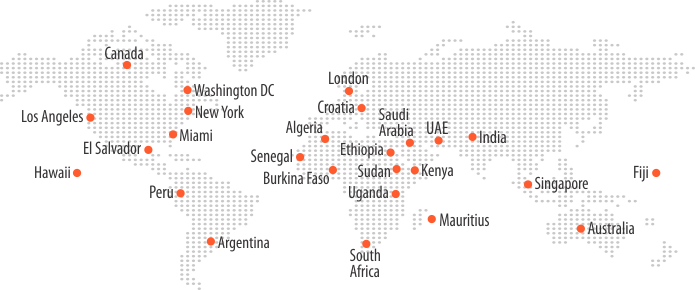The Future of Wholesale Telecom Beyond Imagination!

The global carrier wholesale market adjusts to a series of systematic risks brought on by transformations in wholesale business and technology. All the global wholesale carriers are facing huge pressure for speeding up the launch of new services and lower their voice exposure. Many businesses have adopted digital technology, but many carriers have not.
Carriers are doing much of their business manually, which is inadequate in the digital era. Fortunately, carriers have the option to become digitized and, boost the speed with which they transact. As a result, both carriers and service providers may see an increase in revenue.
Let’s Dive Deeper into how Digital Transformation can Leverage the Telecom Wholesale –
Creating Networks for the Future
Creating self-optimizing and highly secured zero-touch networks, virtualization, 5G technologies, SDNs, cognitive radio networks a conception of the physical hardware layer gives a full guarantee for shifting the basis of future service differentiation fundamentally. Cloud solutions can manage the complex challenges when get arrived in the telecom business. Talking about the whole telecom industry, cloud computing promotes the deployment of SDN, NFV, and zero-touch networks. All of them can deliver influential retail value to the telecom merchant.
The rapid increase in data usage and linked devices will soon necessitate a large boost in network power. Furthermore, end-to-end network latency will need to be extremely decreased to provide users with a flawless surfing experience. For completing the requirement of intensifying bandwidth, the telecom manufacturers should put their whole concentration on creating scalable networks. These networks must have all the capacity to handle huge data volumes at the peak time of utilization periods.
Reinventing Customer Engagement
To compete for mindshare and consumer loyalty, telecom companies need to implement more features and technologies that provide enjoyable digital experiences. This is specifically significant since customers currently want companies in various industries to match the high-quality digital experiences that they receive in one area. The fast on-demand evolution, personalized and seamless services all over the industries is a direct demonstration of the trend.
Providing Scalable SDN on-demand
The SDN method for network management is cutting-edge. The data and control planes are decoupled using SDN technology. This enables network modules to be controlled from a single place or device, greatly improving network traffic management.
SDNs also enhances network clarity by allowing real-time access to network components, making it easier to detect and eliminate network issues. Most notably, SDN is scalable and allows for “on-demand” network tailoring based on the demands of the client, resulting in significant CapEx and OpEx savings.
Decentralizing Current Digital Architecture
To operate, the telecom industry is dependent on traditional digital systems that are often centralized and have a single point of interaction. Decentralization is possible because of technological advancements and the introduction of agile cloud computing implementation and methodology.
To drive an efficient digital transformation, telecommunications businesses must aim to decentralize their procurement and decision-making systems both internally and externally.
Elevating Legacy Systems
One of the most difficult transition issues is how to modernize legacy systems. It’s the most prevalent stumbling block, and it can be a challenge for telecom businesses. One should opt for replacing old systems and software with technologies like cloud computing and more to achieve total digital transformation. As a result, before the beginning of the transformation process, one must think carefully and assign resources and a budget. Some of the best examples of legacy systems cover – ERPs, hardware, operating systems, network infrastructure and more.
Integrating the Internet of Things and Cloud Computing
Cloud computing and the Internet of Things (IoT) have transformed the telecom sector. They’ve helped the industry reach unexplored heights. However, proper integration of both has been a challenge. As there is no one-size-fits-all solution, businesses must determine where and how all these technologies can get integrated into their infrastructure. It is critical to improve the performance of the existing systems and operations. The cloud services act as a platform for data processing and computation. Also, they are a famous management platform for IoT deployments.
Managing new Levels of Operational Complexity
The telecommunication industry’s new-age networks, like 5G, strive to offer a wide range of services to end-users. Business Support Systems, or BSS, enable telecom businesses to conduct their operations in the direction of their customers. BSS and OSS (Operations Support Systems) work together to support a variety of end-to-end communications, for example – telephone services. As a result, the expansion of additional services, increased subscriptions, and packaged customized communication solutions will undoubtedly add to the complexities of your functions.
Furthering Strategic Digitization for the Win!
To stay ahead of the competition, fulfill customer demand, and generate new revenue streams, telecom companies must embark on their digital transformation path as soon as viable. Switching from traditional business models and outdated systems to scalable and agile SDN and NFV architecture, innovative IoT solutions, and high-end 5G networks can provide telecom firms with unprecedented revenue potential.
As the digital technology terrain is dynamic and continuously changing, telecommunications companies must adapt quickly to keep up. This will necessitate keeping up with the times by incorporating some or all aspects of digital transformation into your business operations.
Learn the business game plan for telcos in the future and share your views.
Related Posts
The Changing Wholesale Business Model For Telco’s
Top 5 Trends In The Global Wholesale Carrier Industry






